Living in Harmony: The History of Opera Estate
Asrina Tanuri traces the development of Opera Estate from its early beginnings as coconut and rubber plantations to a private residential estate.
%20(orig).png)
Today, no one buying a home in Opera Estate would bat an eyelid at paying over a million dollars for a place there. This is in stark contrast to the 1950s when developers first began selling homes there. Back then, a one-storey terrace house in Opera Estate would sell for just under $10,000.
In those days, life in the estate was a bit of a struggle. It was off the beaten track, buses did not ply the area and residents had to deal with constant flooding. However, some six decades later, life is very different.
Opera Estate is a private residential estate bordered by New Upper Changi Road, Bedok South Road, Upper East Coast Road and Siglap Road. The street names in the estate were inspired by European operas and bangsawan (traditional Malay opera).
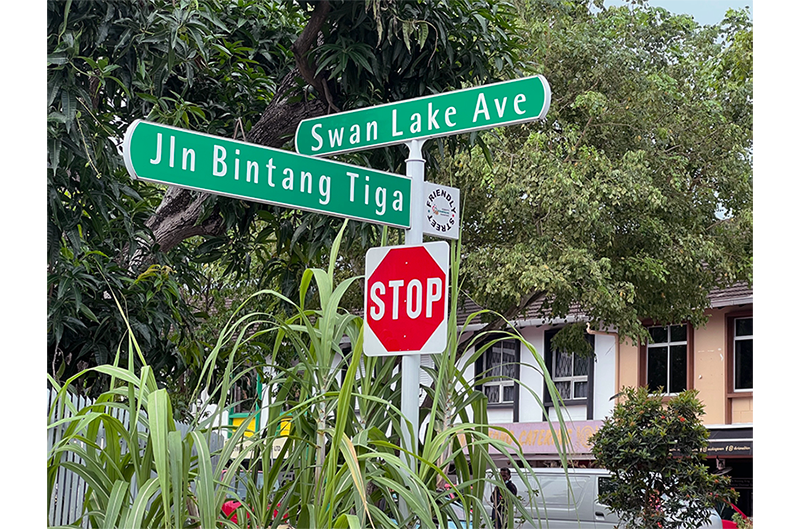
The area was part of almost 500 acres of coconut and rubber plantations owned by the Frankel family. Abraham Frankel had arrived in Singapore in 1888 from a poor village in Lithuania to pursue a better life for his family, and eventually became a prominent and wealthy merchant. The Frankels’ sprawling landholdings in Siglap (which was near the sea at the time before land reclamation) included a house in which the family lived until World War II.1
Around 1947, the land was acquired by Crédit Foncier d’Extrême-Orient, a pioneer Franco-Belgian land developer in Singapore, for about $1.1 million. The deal was brokered by Nassim & Co. Limited.2 The area was eventually divided into Frankel Estate and Opera Estate.
Private Residential Development
The development of Opera Estate into a residential area began in the 1950s.3 Crédit Foncier d’Extrême-Orient divided up the land and sold the plots to various developers who embarked on different housing projects in the estate. These included Crédit Foncier itself, the Singapore Trading Company and Nassim & Co.
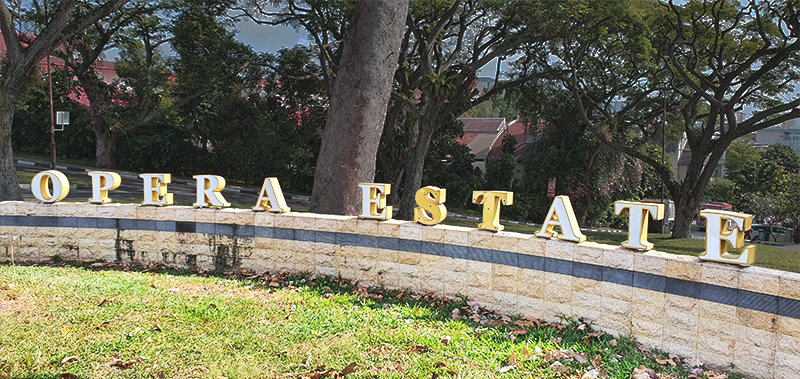
Nassim & Co. in turn sold off a small parcel of land to a developer, Chua Chye Chua, in 1957. Chua recalled: “[T]he environment there… it was a semi-deserted place, jungle-like environment with a lot of rubber trees, ponds for the ducks and… pig [farms]. Then you have small hillocks made of limestone and so on. … [After I purchased the land], I have [sic] to do all this clearance, filling up all the ponds, knocking down the hillocks before I could start building. It took me some time.”4 Chua built 12 bungalows with modern sanitation which were sold between $15,000 and $18,000 each.
According to him, the houses in Opera Estate were not targeted at the wealthy: “They were the usual working-class people who are clerical workers or some semi-professional ones and so on. These are the kind of houses they can only afford to buy. Other houses in the other parts of Singapore would probably cost them well over a hundred thousand [dollars]. A hundred thousand [dollars] in those days were big money.”5
In addition to bungalows, there were also smaller and cheaper terrace houses. The homes sold by Crédit Foncier were on Dafne and Aida streets and were one-storey terrace houses with asbestos roofs and cement floors. Their prices started at $9,760.6 Nassim & Co. sold single-storey terrace houses along Fidelio Street starting from $14,000. Each came with two bedrooms, a utility room, a spacious lounge and dining room, and a front and back garden.7 In 1957, Nassim & Co. advertised a “modern two-storey bungalow” with three bedrooms in Opera Estate for $24,900.8
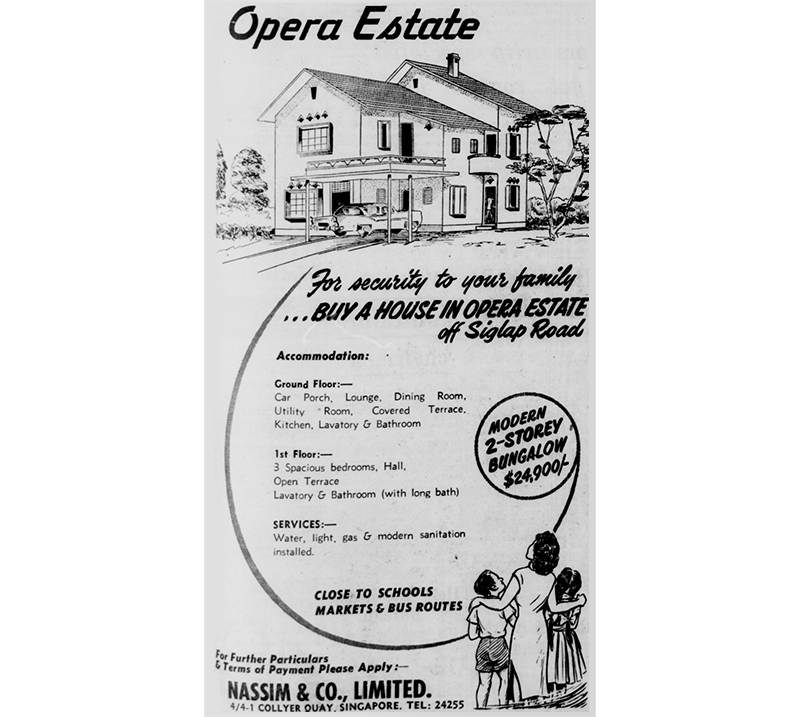
In a Berita Harian article about Opera Estate in 1989, bangsawan actor Shariff Medan, one of the estate’s early residents, said he bought his single-storey terrace house on Dido Street for only $7,800. He recalled that the area was not popular at the time. “Tetapi ramai orang tak suka tempat ini sebab jalannya berlekuk, berlumpur, tak ada kemudahan dan banyak nyamuk.”9 (Translation: But many people did not like this place because the roads were full of potholes and muddy. The area also lacked facilities and was infested with mosquitoes.)
Mrs Nancy Tan, 75, lived in a bungalow on Tosca Street in the 1950s and 60s until she got married and moved out. Her mother had bought the bungalow for $30,000 in the mid-1950s. She recalled that the area was very quiet back then. “Tosca Street had only one row of houses,” she said. “On the opposite side of the road was a grassy field where cows used to graze. My mother would collect the cow dung to be used as fertilisers for her plants. There was a small, rocky hill on Aida Street and I’ve seen goats on the hill. An Indian man would go around the estate on a bicycle selling goat’s milk.”10
One of Opera Estate’s most prominent residents was the first president of Singapore, Yusof Ishak, who lived on Aida Street when he was still a journalist. He was known among the neighbours to have a keen interest in gardening.11 Journalist David Kraal had his first encounter with Yusof Ishak and his wife at Kraal’s uncle’s new terrace house in the neighbourhood. Kraal recalled: “Before we said our goodnights, the gallant journalist [Yusof Ishak] picked a choice orchid from his nearby garden and handed it to my flower-loving mother. It was the perfect end to a fine evening.”12
From the backyard of Mrs Nancy Tan’s former home on Tosca Street, she could see Yusof Ishak’s house. She recalled of his wife: “Puan Noor Aishah was a very warm and friendly lady. She would give us kueh during Hari Raya.”13
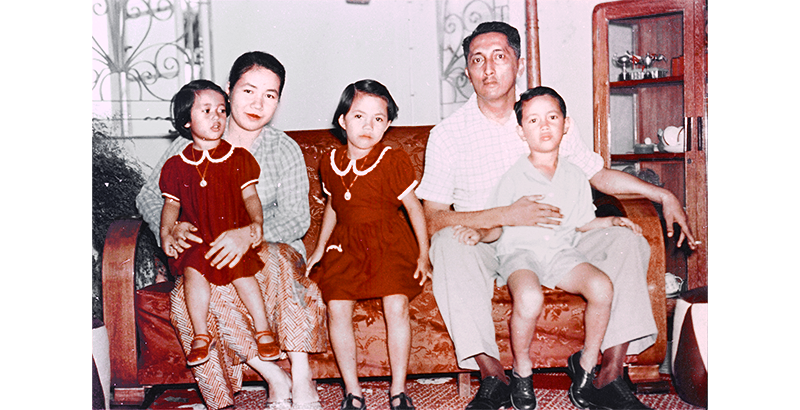
Another well-known figure that resided in Opera Estate was Singapore’s first Minister for Home Affairs and Social Welfare, Othman Wok.14
A Plea for Bus Services
As residents began moving into their new homes in Opera Estate, they found commuting difficult as no public buses were plying the estate.15 In a letter written in June 1958 to the authorities appealing for a bus company to service the area, the residents wrote: “It is a tragic sight, nay, pathetic to see office workers (men and women of all ages) climb the steep incline and walk one mile to Changi Road panting and perspiring, in order to get a bus to their offices in town; schoolchildren ranging from six years and upwards rushing from as early as seven o’clock in the morning to get to one of the 12 schools in Katong or Geylang areas.”16
Residents had to rely on pirate taxis instead, who charged unreasonably high fares.17 It was only after a concrete bridge replaced a makeshift one made from coconut tree trunks and the widening of a road to accommodate buses that a daily bus service eventually began running in May 1959. The service was provided by Katong-Bedok Bus Service and started from Guillemard Road and ran through Opera Estate via Frankel Estate.18
The Flood Menace
Opera Estate also used to be prone to flooding. The floods mainly occurred in the areas bound by New Changi Road, Fidelio Street and Dido Street, as well as Carmen Street, Carmen Terrace and Lakme Terrace.
In October 1973, a heavy morning downpour caused massive floods that submerged more than a hundred houses under three to four feet (1 to 1.2 m) of water. The Straits Times reported that “housewives, who had anticipated flooding because it had occurred on four previous occasions during the rainy spell this month rushed back from markets and telephoned their husbands to return and help in evacuating furniture and goods”. The Chua family on Aida Street was badly hit as their rock garden, which was worth thousands of dollars, was damaged. Their pet dog also drowned in the flooding.19
Floods continued to plague residents well into the 1990s. Each time heavy rainfall was forecasted, residents would move their belongings to higher ground. After the floodwater receded, residents had to spend hours clearing the debris and cleaning their homes, salvaging what could be saved and discarding the rest.
One such resident was Basil Fernando, who had a piano and radio destroyed in a flood in 1974. Since then, he had been diligently recording every flood in a logbook. He told the WEEKENDeast weekly newspaper in 1996: “After the floods, you see the neighbours throwing away their carpets. Once our neighbours came back from a holiday to find their speakers destroyed.” He said that if it rained at night, his family would stay up in case it flooded.20
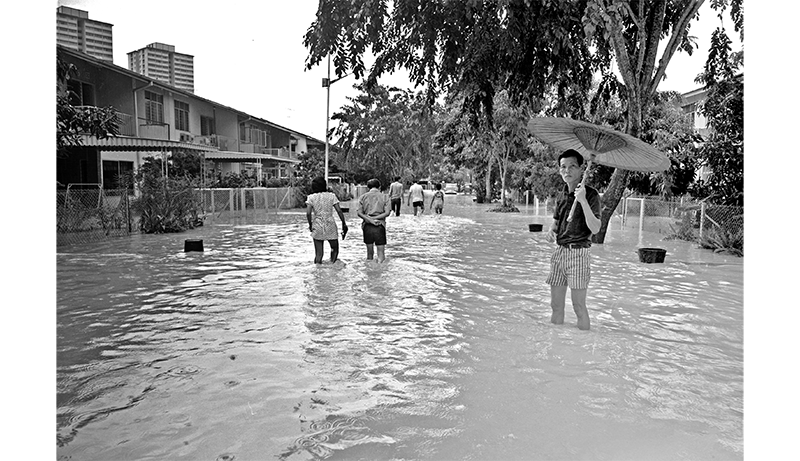
Mdm Irene Loh, 75, was a resident of Jalan Bintang Tiga. She recalled the flooding that occurred in the 1980s and 90s: “Once it rained so heavily that water entered the kitchen from the overflowing drain behind my house. At the same time, water also gushed in from the front. The entire first floor was flooded. My daughters even saw some fish swimming in the living room, but luckily there were no snakes.”21
In 1996, the Ministry of Environment embarked on a $46-million drainage project to ease the flooding in the estate.22 Taking about six years to complete, the scheme involved “impound[ing] the stormwater in an underground pond and then pump[ing] it into the main canal” to “control and regulate the rate of flow in the canal”. An underground storage tank was built under the Opera Estate Primary School field which would temporarily store rainwater during heavy storms.23
The Kampong Spirit
Life in Opera Estate wasn’t just about fighting floodwaters though. The kampong spirit of gotong royong (communal help) was very much alive in Opera Estate from the beginning. In the late 1950s, the Opera Estate Residents’ Association was established to foster community bonding. The association aimed to “make this estate a model housing estate where conditions of living should be ideal, and, in this respect, earnestly solicit your (the residents) co-operation, assistance and guidance”. The committee aimed to “better our living conditions in this estate”. These included “getting the first public telephone installed, police patrols, jaga patrols, street lighting, roads and drains, street name plates [and] traffic signs”.24
In 1960, “Operation Chantek” (chantek is now spelt cantik, which means “pretty” in Malay) was initiated to clear overgrown lallang and potholes containing stagnant water in an unoccupied land between Rienzi Street and Norma Terrace. Resident Donald Tan led a group of 20 volunteers for the operation. “The place has been an eyesore ever since the estate was built about five years ago. I am glad we are doing something about it at last,” he said.25
The following year, some 60 members of the Opera Estate Residents’ Association came together to repair two damaged roads in the estate that were reported to be in a “derelict condition”. Not only did they take on the hard labour of repairing the roads, the residents also bore the expenses for the repairs.26
Jalan Bintang Tiga – Singapore’s First Friendly Street
The neighbourhood spirit is perhaps best exemplified by Jalan Bintang Tiga’s “Let’s Makan” party, a tradition first initiated by cartoonist James Suresh in 2001 to celebrate National Day with a few of his neighbours. The small potluck party evolved into a bigger street party that takes places annually in August to foster the spirit of neighbourliness. Neighbours come together to contribute and help prepare the multicultural food spread and organise games for the children.27
Suresh, co-creator of the popular local comic book series Mr Kiasu, moved into Opera Estate in 1993. In 2015, he told the newspaper Today: “Organising the annual street party is just a small way to bring neighbours together in acknowledgement of our common space and neighbourly ties. It also provides opportunities for us to show our care and concern for each other.”28

Over the years, the attendance grew as old neighbours who had moved out returned for the event and new residents joined in. Mdm Irene Loh, who now resides on Aida Street, and her family still make it a point to attend the street party. She said: “I look forward to the event each year as it’s a time to catch up with former neighbours, soak up the atmosphere and look at the mango tree in my old home.”29
The Singapore Kindness Movement began supporting the annual event in 2013 by sponsoring the tent and some food. Six years later, it named Jalan Bintang Tiga Singapore’s first “Friendly Street” with a special identity motif affixed to its street sign.30
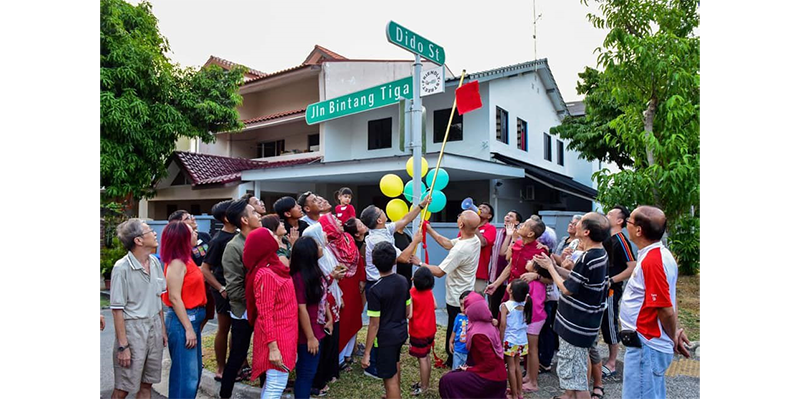
Guests who have been invited to the street party include former Emeritus Senior Minister Goh Chok Tong; former Member of Parliament for Joo Chiat SMC, Charles Chong; Member of Parliament for Marine Parade GRC (Joo Chiat) Edwin Tong; former Non-constituency Member of Parliament Yee Jenn Jong, who grew up in Opera Estate; and William Wan, General Secretary of the Singapore Kindness Movement.
The street party ran every year for about two decades. Unfortunately, because of the Covid-19 pandemic, the party did not take place in 2020 and 2021.
Amenities in the Neighbourhood
Very early on, a number of primary schools were set up in the area. Opera Estate Boys’ School and Opera Estate Girls’ School were established in 1959. The buildings of the two primary schools stood side-by-side along Fidelio Street. Both schools were then merged to form Opera Estate Primary School in 1985, which is still on Fidelio Street today.31
Located on Jalan Khairuddin, the Convent of the Holy Infant Jesus (CHIJ) Opera Estate, also known as Opera Estate Convent, was also founded in 1959. In 1990, it merged with the primary school section of Katong Convent and both became known as CHIJ (Katong) Primary. The Red Cross Training Camp currently occupies the old school premises on Jalan Khairuddin.32
There are three parks in Opera Estate: Aida Park, which is between Aida Street and Bedok South Road; Bangsawan Park along Bangsawan Road; and Siglap Linear Park. The last was completed in 2002 and stretches from Swan Lake Avenue all the way to East Coast Park by the sea.33 An open field on Swan Lake Avenue known as Opera Estate Football Field is also popular with residents.
.png)
Swan Lake Avenue is also where you can find a row of shophouses housing eateries such as Baker & Cook and Plank Sourdough Pizza, as well as a number of food catering companies.
.png)
Today, more than 60 years after the estate was first developed, most of the original houses have been torn down and replaced with modern, multi-storeyed homes worth millions. Many of the original residents have moved out and young families with children in tow have made Opera Estate their home. But one thing remains the same: Opera Estate is still a peaceful and quiet residential area with neighbours living together in harmony.
According to the Advisory Committee on the Naming of Roads and Streets in 2002, the name “Opera Estate” and the street names within were probably suggested by a developer.
Aida Street Aida is an opera by Giuseppe Verdi set in ancient Egypt.
Carmen Street and Carmen is an opera by Georges Bizet.
Carmen Terrace
Dafne Street Dafne is an opera by Richard Strauss.
Dido Street Dido and Aeneas, an opera set in ancient Greece, was written by Henry Purcell.
Ernani Street Ernani is another opera by Verdi.
Fidelio Street Fidelio is Ludwig van Beethoven’s only opera.
Figaro Street The Marriage of Figaro is an opera by Wolfgang Amadeus Mozart.
Jalan Bangsawan Bangsawan is the art of traditional Malay opera.
Jalan Bintang Tiga Jula Juli Bintang Tiga is the title of a popular Malay bangsawan. Bintang tiga is Malay
for “three stars”.
Jalan Khairuddin This street is named after Khairuddin Amiruddin, a bangsawan star popular in
Singapore in the 1920s.
Jalan Terang Bulan Terang Bulan (“bright moon”) is a bangsawan. A popular Indonesian song in the 1930s,
and Terang it was adapted from the French song La Rosalie.
Bulan Avenue
Lakme Street and Lakmé is an opera by Léo Delibes set in 19th-century India.
Maria Avenue Possibly named after Maria Callas, the American-born Greek soprano who was one of
the most renowned and influential opera singers of the 20th century.
Metropole Drive The Opéra-Théâtre de Metz Métropole is a theatre and opera house located in the
city of Metz in France. The opera house opened in 1732 and is the oldest in France.
Norma Terrace Norma is an opera by Vincenzo Bellini.
Rienzi Street Rienzi is an opera by Richard Wagner.
Swan Lake Avenue Swan Lake is a ballet by Pyotr Ilyich Tchaikovsky.
Tosca Street and Tosca is an opera by Giacomo Puccini.
Tosca Terrace
REFERENCES
Dunlop, Peter K.G. Street Names of Singapore, 39, 65, 68, 77, 82-83, 116, 118, 131, 153, 178, 210, 225, 263, 296, 308, 312. Singapore: Who’s Who, 2000. (From National Library, Singapore, Call no. RSING 959.57 DUN)
Hanim Mohd Saleh. “‘Estet Bangsawan’ di Opera Estate,” Berita Harian, 10 November 1989, 8. (From NewspaperSG)
Ng, Desmond. “Named After Famous Operas,” New Paper, 19 June 2002, 39. (From NewspaperSG)
Ng, Yew Peng. What’s in the Name? How the Streets and Villages in Singapore Got Their Names, 66, 108, 137, 141, 150, 154, 191, 194, 213, 280, 326, 341, 372, 404, 416, 422. Singapore: World Scientific, 2018. (From National Library, Singapore, Call no. RSING 915.9570014 NG)
Sulaiman Jeem. “Pak Din – Tokoh Bangsawan Yg Ta’ Ada Tolok Banding-nya,” Berita Harian, 18 April 1964, 7. (From NewspaperSG)
 Asrina Tanuri is a Manager (Research) with the National Library, Singapore, where she provides information services to government agencies. Her research areas include community safety and security, and adult learning.
Asrina Tanuri is a Manager (Research) with the National Library, Singapore, where she provides information services to government agencies. Her research areas include community safety and security, and adult learning.NOTES
-
Joan Bieder, ed., The Jews of Singapore (Singapore: Suntree Media, 2007), 29, 80–81. (From National Library, Singapore, Call no. RSING 959.57004924 BIE); Lisa Ginsburgh, “Worlds Apart in Singapore: A Jewish Family Story,” Asian Jewish Life, no. 15 (October 2014), https://asianjewishlife.org/pages/articles/AJL_Issue_15_Oct2014/AJL_Issue15_CoverStory_Worlds_Apart_in_Singapore.html; “Death of Mr. A. Frankel,” Malaya Tribune, 28 May 1928, 7. (From NewspaperSG) ↩
-
“Homes Will Rise on this Million $ Land,” Singapore Standard, 2 April 1951, 2; “$500,000 Estate Deal in S’pore,” Malaya Tribune, 8 March 1947, 1; “40 New Homes for Squatters,” Singapore Free Press, 5 May 1951, 5. (From NewspaperSG); Thomas Coomans, “China Papers: The Architecture Archives of the Building Company Crédit Foncier d’Extrême-Orient (1907–1959),” ABE Journal Architecture Beyond Europe, no. 5 (2014, December), ResearchGate, https://www.researchgate.net/publication/277885016_China_Papers_The_architecture_archives_of_the_building_company_Credit_Foncier_d’Extreme-Orient_1907-59. ↩
-
Victor R. Savage and Brenda S. Yeoh, Toponymics: A Study of Singapore Street Names (Singapore: Eastern Universities Press, 2004), 20. (From National Library, Singapore, Call no. RSING 915.9570014 SAV) ↩
-
Chua Chye Chua, oral history interview by Jesley Chua Chee Huan, 23 July 1999, MP3 audio, Reel/Disc 13 of 23. (From National Archives of Singapore, Accession no. 002140) ↩
-
Chua Chye Chua, interview. ↩
-
“Credit Foncier Starts New Building Project,” Singapore Standard, 3 January 1956, 9. (From NewspaperSG) ↩
-
“Page 7 Advertisements Column 1,” The Straits Times, 27 October 1956, 7. (From NewspaperSG) ↩
-
“Page 3 Advertisements Column 1,” The Straits Times, 21 March 1957, 3. (From NewspaperSG) ↩
-
Hanim Mohd Saleh, “‘Estet Bangsawan’ di Opera Estate,” Berita Harian, 10 November 1989, 8. (From NewspaperSG) ↩
-
Mrs Nancy Tan, interview, 5 January 2022. ↩
-
Mohd Anis Tairan, Kampungku Siglap: Memoir Mohd Anis Tairan (Singapore: Majlis Pusat Pertubuhan-Pertubuhan Budaya Melayu Singapura, 2010), 33. (From National Library, Singapore, Call no. RSING 959.57 MOH) ↩
-
David Kraal, “The President, My Friend,” Straits Times, 6 September 1985, 2. (From NewspaperSG) ↩
-
Mrs Nancy Tan, interview, 5 January 2022. ↩
-
Ravi Veloo, “The Story of Singapore’s Race Relations As Seen Through His Eyes,” Straits Times, 25 January 1997, 44; Jackie Sam, “3 New Ministers,” Straits Times, 18 October 1963, 1. (From NewspaperSG) ↩
-
“4,000 Still Have to Hike a Mile to Bus-Stop,” Singapore Standard, 25 October 1958, 5. (From NewspaperSG) ↩
-
“Appeal to Govt. for Bus Service,” Singapore Standard, 25 June 1958, 5. (From NewspaperSG) ↩
-
“‘Pirate’ Taxi Men Have Monopoly in Opera Estate,” Straits Times, 15 February 1959, 7. (From NewspaperSG) ↩
-
“This ‘Bridge of Sighs’ for 4,000 Residents of Opera Estate in Singapore,” Sunday Standard, 3 August 1958, 2; “Estate Gets New Bridge: Residents Thank Standard,” Singapore Standard, 5 September 1958, 2; “Bus Service For Housing Estate,” Straits Times, 31 May 1959, 5; “Now Opera Estate Gets Buses,” Straits Times, 1 June 1959, 2. (From NewspaperSG) ↩
-
Gerald Pereira, Maureen Chua and Jacob Daniel, “Flood of Protest After Big Downpour,” Straits Times, 27 October 1973, 6. (From NewspaperSG) ↩
-
Celine Tan, “Family Stays Awake If It Rains At Night,” WEEKENDEast, 4 October 1996, 2. (From NewspaperSG) ↩
-
Mdm Irene Loh, interview, 6 January 2022. ↩
-
Tracy Lee, “Opera Estate Plan to Ease Floods,” Straits Times, 29 September 1996, 29. (From NewspaperSG) ↩
-
Abdullah Tarmugi, “Speech by Mr Abullah Tarmugi Minister for Community Development and Member of Parliament for Bedok GRC (Siglap) at the Launching Ceremony for the Opera Estate Drainage Scheme on Saturday 28 September 1996 at 11.35 am Opera Estate Primary School,” 28 September 1996, transcript. (From National Archives of Singapore, Document no. at19960928s); Ng Joo Hee, “How We May Tame Storm Water,” Straits Times, 18 November 2016, 18. (From NewspaperSG) ↩
-
Opera Estate Facebook, accessed 7 January 2022, https://www.facebook.com/operaestatenc/; “Editorial,” Opera News, no. 1 (2-A) (February 1959): 1. (From PublicationSG); “Opera News Makes Debut,” Singapore Standard, 29 January 1959, 5. (From NewspaperSG) ↩
-
Alan Khoo, “‘Operation Chantek’ in Opera Estate,” Singapore Free Press, 30 March 1960, 7. (From NewspaperSG) ↩
-
“Residents’ ‘Changkol Squad’ Fix Estate Roads,” Singapore Free Press, 1 June 1961, 4; “Example of the Good Citizens,” Singapore Free Press, 2 June 1961, 6. (From NewspaperSG) ↩
-
Mr Kiasu and His Kampung Spirit,” Tabla, 16 October 2015, 1. (From NewspaperSG); “Singapore Names its First Friendly Street,” Singapore Kindness Movement, 17 August 2019, https://www.kindness.sg/news/singapore-names-its-first-friendly-street/; Marilyn Peh, “For the Past 20 Years, This Tight-knit Group of Neighbours Have Kept a Special Street Party Tradition Alive,” The Pride, 2 September 2019, https://pride.kindness.sg/20-years-neighbours-jalan-bintang-tiga-james-suresh-street-party/. ↩
-
James Suresh, “A Neighbourly Connection,” Today, 5 March 2014, 45. (From NewspaperSG) ↩
-
Mdm Irene Loh, interview, 6 January 2022. ↩
-
“Singapore Names its First Friendly Street.” ↩
-
“History,” Opera Estate Primary School, accessed 7 January 2022, https://operaestatepri.moe.edu.sg/history/. ↩
-
“Back Under One Roof After 14 years,” Straits Times, 5 May 1990, 8. (From NewspaperSG); “History,” CHIJ (Katong) Primary, accessed 7 January 2022, https://www.chijkcp.moe.edu.sg/our-ij-story/history. ↩
-
Michelle Goh, Celebrating Siglap (Singapore: Straits Times Press, 2009), 67. (From National Library, Singapore, Call no. RSING 959.57 GOH) ↩

